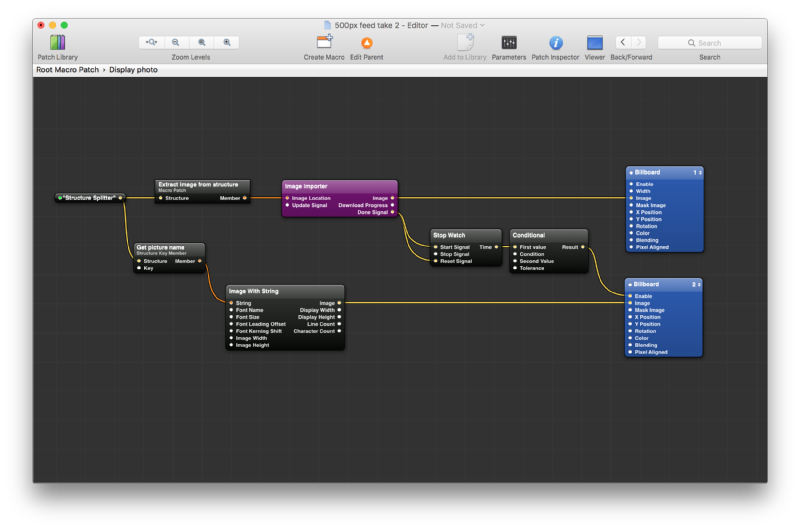Discovering things too late: Quartz Composer edition
3 Jan 2016
Tags: development, quartz
Like most techies I have a todo list of things I'd like to hack on as long as my arm, and xmas is one of the few times I get to act on them. However, I don't want to spend all xmas doing my day job in another form, which is what a lot of the list would look like.
One of the things I wanted to get going again was the screen in our kitchen. We have a nice framed monitor on the wall that we used to use with our CODA screen back in the day to display photos, weather, social media feeds, etc. One of the reasons I was particularly sad when Camvine and CODA went away was not just because of the effort myself and others had poured into the company, it's because it was a genuinely useful product, and I've not since found something that would let me manage content on my wall so easily and our kitchen display has sat unused since.
I often want to get something up and running to replace it, but the amount of boilerplate to get to the position of doing the fun part (displaying pictures and feeds with any sense of style) just puts me off. But then I happened across a tutorial for Apple's Quartz Composer, which let me do all the fun bits right away without any tedious code, and has a path to making it into an app when I'm done.

Quartz Composer is a lot of fun - it's a node based system where you wire up operations to make a simple flow that results in nice things appearing on screen, and allows many interaction modes. I imagine all my design friends are laughing at me for taking this long to find such a tool - I've always had my head down in the nuts and bolts, which is why I imagine I skipped over this originally. Within half an hour I had something up and running displaying my photo feed from 500px, and a day or two later something slightly more polished.
I looked forward to pouring more time into this project over the coming months, but unfortunately, I've also discovered Quartz Composer has been abandoned by Apple. Whilst you can still use it, it's got some serious issues on El Capitan, initially I was going to post links to tutorials I followed here, but I can't really recommend anyone give it a try. Which is sad, as it delivers both a simplicity to prototype up visual and interactive interfaces very quickly, but then also turn them into production quite simply too.
Still, for my own uses here, it continues to function for now, so I have a working screen in my kitchen again.